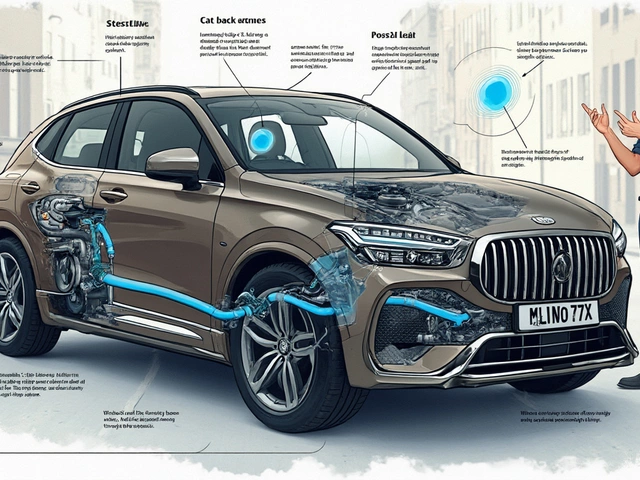Standing in front of a wall of wiper blades at the store is like looking at a lineup of identical twins—you know there’s a difference, but it’s not obvious. The last thing you want is to buy a set just to find out they’re too long, too short, or don’t even snap onto your car. The right sized wiper blade matters because if you go too long, the blades might hit each other or the edge of the windshield, and too short means you get streaks and bad visibility—especially on those days when rain just won’t quit.
Start by checking your owner’s manual or looking it up online with your make, model, and year. Most stores also have those paper or touchscreen guides right by the wiper display. Never just guess—some car windows are a weird shape, and having a buddy eyeball it won’t cut it. Sometimes the driver and passenger sides are different lengths too, so don’t assume both sides use the same size.
- Why Size Matters
- Different Types of Wiper Blades
- Finding the Perfect Fit
- When to Replace and Extra Tips
Why Size Matters
If you’re picking out new wiper blades, size is the golden rule. Grab the wrong length, and your new blades might barely cover your field of vision, or worse, smash against each other with every swipe. It’s not just about fit—using the wrong-sized wipers can actually strain the blade arms or the motor over time, which nobody wants to deal with.
Most cars need two different blade sizes—yep, the driver and passenger sides often aren’t twins. Trucks, SUVs, and even some hatchbacks can use three different blade sizes if you count the rear. Always check your vehicle’s manual, the sticker at the auto store, or type your car’s year, make, and model into an online database. The difference between a good view and an annoying smear could be just one inch.
Check out how just a small difference affects coverage on a basic sedan windshield:
| Blade Size | Coverage Area |
|---|---|
| 20 inches | 85% |
| 18 inches | 78% |
| 16 inches | 69% |
Use the size the manufacturer calls for. Brands like Bosch, Rain-X, and Valeo make it easy by listing all compatible models on their packaging and websites. Cutting corners doesn’t pay off—if you fudge the size, you’re risking poor cleaning, a noisy wiper, and possible scratches. Want to dodge an awkward return trip to the store? Double-check your measurements before heading out.
Different Types of Wiper Blades
Not all wiper blades are built the same—there are a few main types, and picking the right one can actually make a difference on rainy days. The three big categories are traditional frame-style, beam blades, and hybrid blades. Here’s what you need to know about each:
- Frame-Style (Conventional): These are the classic ones you see on most cars from the factory. They have a metal frame that holds the rubber blade. They’re cheap and easy to find, but snow and ice can clog up the joints because of all the moving parts.
- Beam Blades: These are the fancy-looking ones—no external frame, just a solid rubber or silicone strip. Since there’s no framework to jam up, they do better against ice and snow. Beam blades also hug the curve of your windshield better, so you get less streaking. They usually cost more, but most people say they last longer and perform better, especially in rough weather.
- Hybrid Blades: Think of these as a mix between the first two. They’ve got some structure for support, like the frame-style, but also a streamlined, covered design to keep out gunk. If you want something with good all-season performance but don’t want to fully commit to beam blades, hybrids are a solid choice.
If you’re curious how popular these types are, check out this table showing the market split over the last year. Turns out, more folks are making the switch to beam blades, especially in places with bad winters.
| Blade Type | US Market Share (2024) |
|---|---|
| Frame-Style | 42% |
| Beam Blades | 47% |
| Hybrid Blades | 11% |
Keep in mind, price isn’t everything. No matter which wiper blades you go with, install them right and check the fit. It only takes one bad blade to ruin your visibility during a downpour. Oh, and if you live somewhere with snow, beam or hybrid blades can save you a lot of scraping and headaches.

Finding the Perfect Fit
This is where most people mess it up—buying wiper blades that "sort of look right" but don't really fit. Don't fall for the one-size-fits-all traps. Even though some blades say they fit multiple vehicles, your car needs a blade that's made for your specific make and model.
Here’s how to make sure you nail it the first time:
- Double-check the measurements. Your car’s owner’s manual lists the blade lengths for both driver and passenger sides—sometimes even the rear, if your car has one.
- If you don't have the manual handy, use your phone to check a reliable auto parts website. Enter your year, make, and model—it spits out the exact sizes you need.
- Grab a tape measure and check your current wiper blades. Measure from end to end (rubber only; don’t include the plastic tab). It’s boring but foolproof.
Now, about fitting the blade onto the arm—this is where the headache usually starts. Most cars use the hook-style wiper arm, but some models have pinch-tabs or side locks. Don't assume it’s always universal. Here’s a quick rundown of the most common wiper blade attachment types:
| Attachment Type | Common Models | Worth Noting |
|---|---|---|
| Hook | Most Japanese/Korean cars | Fast and easy, usually tool-free |
| Pinch Tab | Ford, Chevy, VW | Tabs need squeezing; snug fit |
| Bayonet | Older European cars | Slides in and locks |
| Side Lock | BMW, Audi | Sometimes tricky the first try |
If you’re unsure, look up a quick video for your car’s wiper arm. Most manufacturers even have simple install guides. Blade packaging often comes with little adapters for multiple arm types, but if you run into trouble, don’t be shy to ask the store staff. Many auto parts stores will actually come out and pop them in for you.
Remember, using the right windscreen wipers isn’t just about clear vision—it keeps the windshield from getting scratched by exposed metal if the blades don’t fit tight. So, take the extra five minutes and make sure what you buy is truly made for your car.
When to Replace and Extra Tips
The average driver ignores wiper blades until they screech, leave streaks, or start skipping. That's actually risky—bad blades mean bad visibility when you need it most. Experts say you should actually swap them out every 6 to 12 months, depending on your climate. If you get a lot of sun (think Texas or Arizona), the rubber cracks sooner. In places with heavy rain or snow, blades wear even faster.
How do you know it's time? If you see any of these signs, hit the auto store soon:
- They leave lines or patches of water behind
- The rubber is cracked, split, or frayed
- You hear squeaking or chattering across the glass
- Blades are bent or misshapen (usually from handling ice)
Don't try to stretch them out longer—Rover wouldn't drive with fuzzy vision, and you shouldn't either. Visibility is everything when that downpour hits.
Here's a quick look at how long wiper blades typically last:
| Climate | Average Lifespan |
|---|---|
| Hot/Sunny | 6 months |
| Rainy/Moderate | 6-12 months |
| Snow/Icy | 6 months (sometimes less) |
When shopping for new wiper blades, don’t just grab the cheapest pack. Name brands like Bosch or Rain-X often last longer and fit better. Look for easy-install types—one that needs “no tools” can save you some real frustration in the parking lot. Try to swap both sides together, even if only one is bad, so they work evenly.
For extra life, wipe the rubber clean with a damp paper towel every couple weeks. This keeps grit from chewing them up. And if you drive through winter, never use blades to scrape ice—that's what your defroster and an ice scraper are for.
"Worn wiper blades compromise safety more than most people realize," says Mark Cox at the National Safety Council. "If you can’t see clearly, you can’t react in time."
Don’t skimp on car maintenance like this. New blades are cheap insurance for your next road trip, rainy commute, or even that drive home when the skies surprise you.


